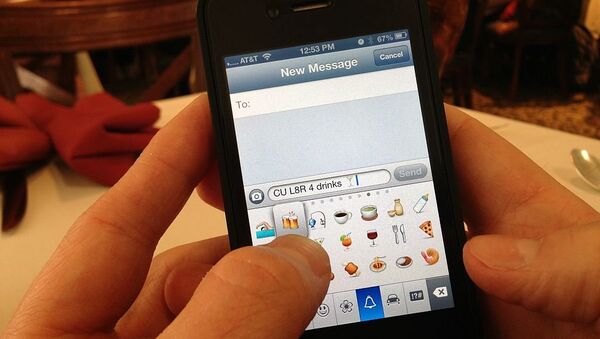The standard emoji has normally been a yellow circular face, with expressions denoting everything from happiness, to frustration and even envy and smugness. There are also often emojis which depict animals, items of clothing or hand gestures. Unlike the emoticon, which was first used in the 1970s and these days is used in SMS messaging and combines a series of characters to depict an image, the emoji is a pictogram. Although there are some detailed, non-yellow smileys currently used, most are ethnically white with the exception of an Indian man with a turban or a man wearing an obviously Chinese hat. None however, are black.
Skin colour modifier
Unsurprisingly, the ‘Unicode Consortium’, a non-profit organisation based in Silicon Valley which decides how the 800 graphic symbols can be seen by different mobile phone carriers, has been under pressure to scrap the standard round, yellow face in place of various skin colours. Unicode is the engineering specification that controls how text is rendered on the Internet and other modern technology platforms. So if you post a message or status update with an emoji on Facebook, everyone can read it on whatever device that they use — because of Unicode. The organisation has revealed that by 2016 it will update its current standard of emojis to include a modifier that can change the skin colour of the faces. They’re proposing that an emoji can have a default, yellow colour but the user will be able to choose a different colour, picked from a survey of demographics, ranging from a pale pink to dark black colour. You can select your own skin tone and set it as your default, using a specific colour code.

The movement to get this changed has been gathering pace for months now. Miley Cyrus, the pop singer, said in a Twitter conversation about emojis and nail varnish as early as 2012: “umm before they add nail colours they BETTER add black people!!!!” A more recent petition lodged on the website ‘DoSomething’ to get Apple to update its default smileys, said: “Of the more than 800 emojis, there’s a white boy, girl, man, woman, elderly man, elderly woman, blonde boy, blonde girl and, we’re pretty sure, Princess Peach. But when it comes to faces other than yellow smileys, there’s a staggering lack of minority representation.”
Dr Bernie Hogan, a research fellow at the Oxford Internet Institute who is studying the use of the emoji believes this move was inevitable. “It was bound to happen eventually, but certainly it’s a very contemporary concern to be interested in social representation,” he said. “Right now we have an internet that is very global and is being used by people all over the world to communicate with each other. It’s no longer a stereotypical internet. Facebook is used by more women than men and there are more internet users in China than there are in America. So it’s that sort of time when people are expecting things like this to not just speak to a default audience, but to speak to all audiences.”
The emoji first became popular in Japan in the late 1990s, combining the word ‘e’, meaning ‘picture’ and ‘moji’, meaning ‘character. It was created by Shigetaka Kurita, who was working for the Japanese mobile operator NTT Docomo. It has since been taken on by various computing platforms, such as Apple, Android and Microsoft.
Emotional punctuation
Dr Hogan explained that the emoji can be used in two ways: “The first is a form of story-telling, which tends to be cute, niche and not something that most people are going to do most of the time. The second more important way is in the form of emotional punctuation, which is particularly important in text-based communication, especially on the internet where people send short messages and often the tone or context of the message is not obvious from the text. It reinserts some of the context in our conversation, where before we might not have had that. Emoji effectively help people get their point across.” Effectively, the emoji will reinforce the implied emotion which may have been absent in the original text message.
Dr Hogan is still unsure as to whether Unicode’s decision to modify the skin colour of its smileys is a good idea. ☺




